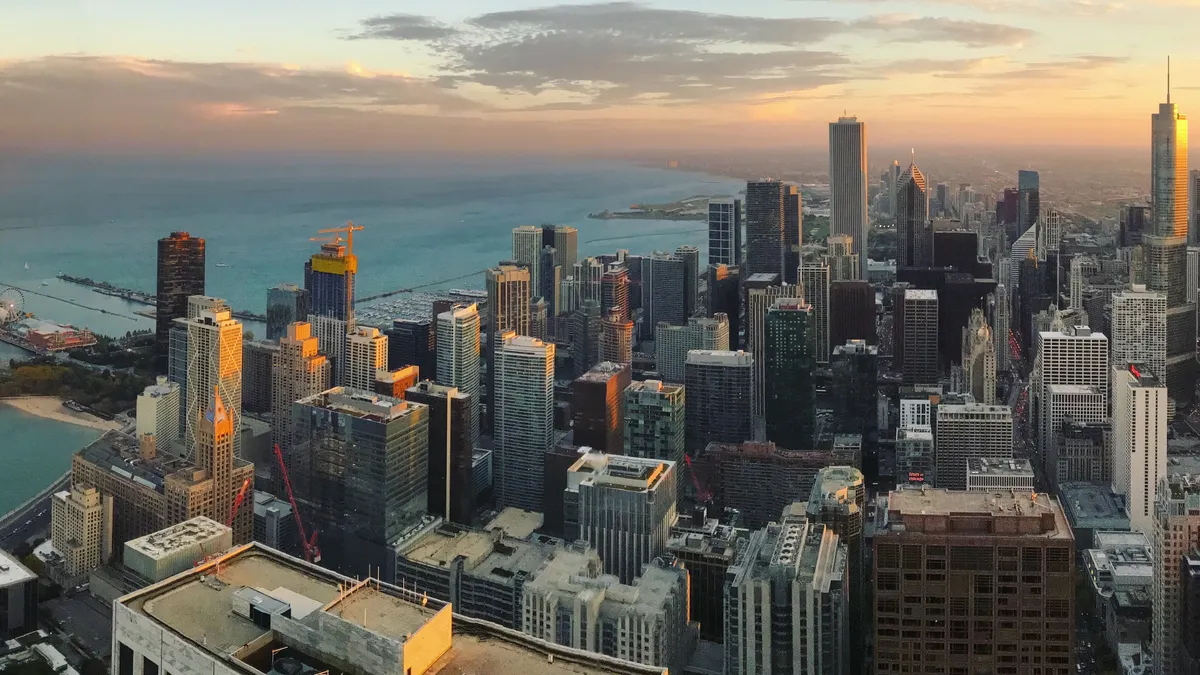Dive Brief:
- Chicago-based environmental nonprofit Urban Rivers started trials for its trash collecting machine, Trashbot, in the Chicago River last week.
- Trashbot is a 2.5 foot by 2.5 foot, remote-controlled device that herds small pieces of trash in the Chicago River, near Goose Island, to a location where it can be safely removed, Nick Wesley, Urban Rivers co-founder, told Smart Cities Dive in an interview. Trashbot has a GPS tracking device, cameras and a tether to prevent it from accidentally floating away or getting vandalized.
- Urban Rivers' ultimate goal is for the robot to operate 24 hours a day and for citizens to control its movements remotely via the internet, similar to a video game.
Dive Insight:
Trashbot is part of a larger Wild Mile initiative, a multigroup effort to create a mile-long floating eco-park along the eastern shore of Goose Island. The Chicago River splits where it encompasses Goose Island, a heavily industrial area that has undergone revitalization in recent years. Goose Island is home to confectioner Mars Wrigley's global headquarters, including its innovation center.
Goose Island is also home to UI Labs, a digital innovation center that up until this winter has been an umbrella group for two research partnerships that will now operate separately. UI Labs consisted of City Tech, which works on technological solutions for cities to operate and deliver services better, and the Digital Manufacturing Design and Innovation Institute, which is rebranding to MxD (manufacturing times digital).
The neighborhood's tech and environmental transformation supports a greater plan to reclaim the previously polluted and undesirable portion of the Chicago River for recreation and education, as well as a wildlife habitat. Urban Rivers provided the first installation of the Wild Mile in 2017 in the form of a floating garden, which has allowed for ecological research that ensures the entire Wild Mile planning process is informed by data-driven decisions. Partners aim to complete the entire project — floating gardens, forests, wetlands, public walkways, learning stations and kayak access points — next year.
Trashbot's small size and design means it doesn't have a large capacity, but it can corral a number of trash items commonly found in the Chicago River — bottles, cans and packaging — before returning to the collection site to deposit the debris. Getting Trashbot to operate 24 hours a day — with each online user controlling it for about two to five minutes — will maximize the volume of trash collected.
Letting the public operate the device lets "people feel empowered to positively change the environment," Wesley said. "In the city of Chicago, people might feel like there's not much you can do about ocean plastics. But this allows people to engage in part of the solution."
In addition to its immediate environmental benefit Trashbot is intended to raise awareness about the impact of trash in waterways.
"The can you see floating in the Chicago River...can travel thousands of miles to the Gulf of Mexico and into the ocean. It's a missed opportunity if we're not intercepting trash... before it reaches that destination," Wesley said. "[Trashbot and the Wild Mile] fit into the whole system of how we engage river systems and urban environments to create unique spaces that use infrastructure as a canvas."












